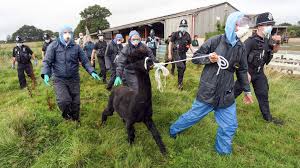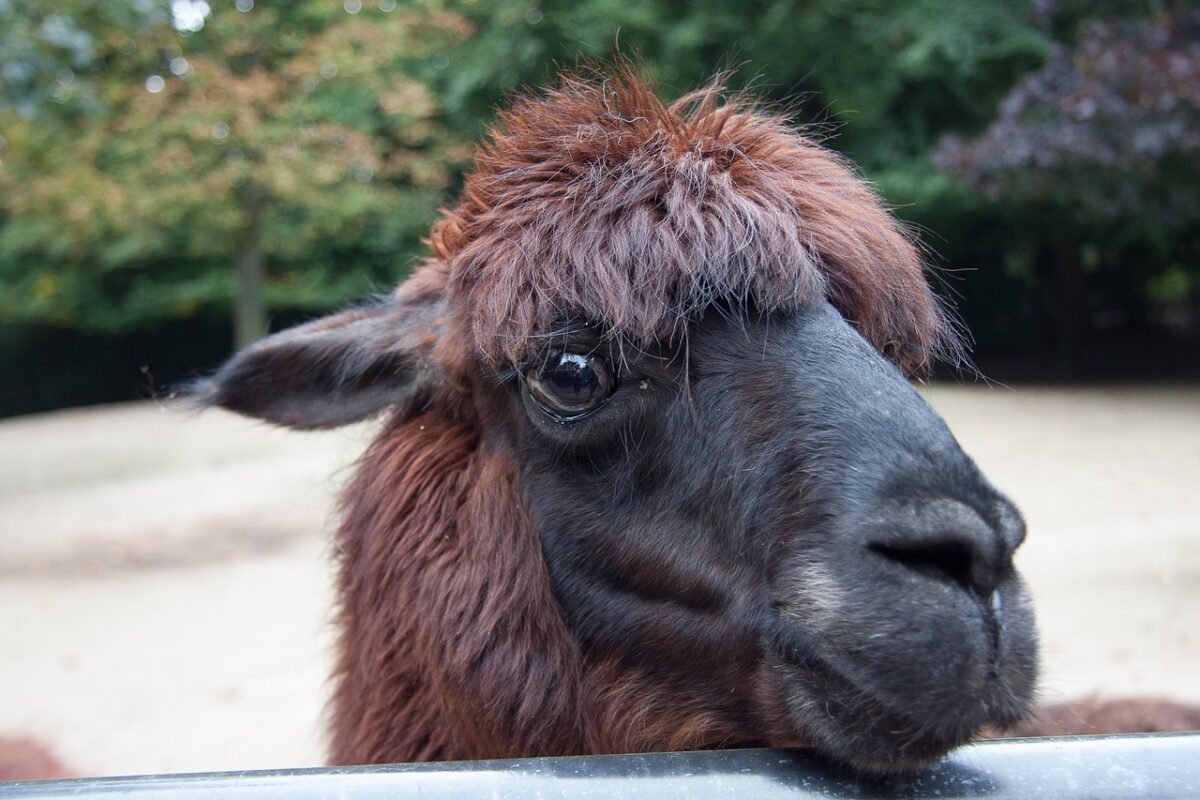The whole tragic and acrimonious tale of the euthanasia of Geronimo the alleged TB suffering alpaca lasted four years. It involved court cases and appeals, a 140,000 petition, a demonstration to Downing Street and appeals direct to Boris Johnson, the UK Prime Minister. Campaigners camped outside the farm reminiscent of the days of the nuclear protests and the story was covered worldwide.
Unfortunately, it ended in distasteful and unacceptable scenes when the poor animal had to be forcibly removed from his farm. Unpalatable as it may have been, Geronimo’s fate was always going to be irrevocable and it should have been everybody’s priority to make his last moments as calm and peaceful as possible. But this did not happen
A media and campaigner scrum.
There was so much wrong on both sides of the fence during his final hours and unforgivably it turned into a scrum which caused considerable stress, anxiety and upset to poor Geronimo. Noisy supporters and demonstrators vented their frustration and emotions and jostled with the media photographers. There were scenes of paparazzi type photographers chasing after the trailer, jumping up to get their last photos as is often seen with prison vans outside courthouses.
This melee unnecessarily forced a Police cordon to be present to protect the government vets trying to lead Geronimo away. Not surprisingly Geronimo reacted to the close proximity of all these uniformed officers and the commotion surrounding him. Accusations by supporters of the government vets mishandling and causing Geronimo distress appear slightly hypocritical and shouts of “call yourself vets” were uncalled for and unhelpful. They were accused of being murderers, executioners, torturers and slaughterers. I am sure the vets and Geronimo would have preferred a more civilised exit.

Geronimo could have been given a more peaceful and respectful end to his life.
It could have been such a different story. Geronimo could have been given the opportunity for a quiet and humane euthanasia in his stable surrounded by people he knew to calm him during his final moments as we would do with our precious pet dog or cat. Or the owner could have done more to keep the circus away and allowed the vet to calmly lead Geronimo to the trailer or even to have done it herself although this would of course have been upsetting.
Well-meaning supporters allowed their emotions to get the better of them.
The well-meaning people present when he was removed from the farm did the poor animal no favours. They allowed their emotions to get the better of them and they lost sight of the wellbeing of the animal they were supposedly so concerned about. They should have put Geronimo’s best interests first by being more respectful.
The whole episode was tragic and although I applaud the concerted efforts of his supporters to save his life, their actions in his final hours just made his death more distressing and pitiful. If Geronimo had been my pet I would have also have fought to save him, but I would have hated to see the life of an animal of mine end in such circumstances.
Geronimo imported from New Zealand for stud.
Although all the coverage portrayed Geronimo as a beloved pet, he was also an expensive stud animal imported from New Zealand to improve the gene line on the alpaca breeding farm which had apparently operated for 15 years. There are hundreds of thousands of them in New Zealand and Australia bred to slaughter for meat.
He was also one of 45,000 alpacas and other camelids in the U.K. involved in the burgeoning breeding and farming of them for their fleece and their meat. As such they are treated as livestock and subject to TB checks. Unfortunately he was was found to be positive in two blood tests although this has always been contested.
Alpacas are killed daily in the U.K.
In 2020, 205 alpacas and other camelids were culled due to TB and over 28,000 cattle and dairy cows along with countless badgers because of the threat of this contagious disease. Their fate goes mainly unnoticed.
As does the fact that in the UK more alpacas are slaughtered each year for their meat, and because they are either unsuitable for breeding or their fleeces are degrading. There are also large numbers of unwanted and abandoned alpacas each year which has resulted in Alpaca rescues having to be set up.
Realistically we should be attempting to stop the keeping of alpacas, llamas and camels in the U.K. so that this kind of incident need not arise.
He was euthanised on Tuesday 31 August 2021.
RIP Geronimo another victim of our passion for exotic meats and clothing.


